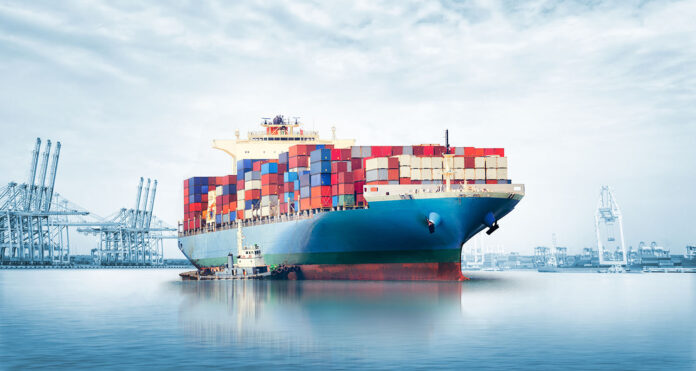When you ask a kid what they want to be when they grow up, chances are they are going to say something like pilot, or cricketer, or actor, or bus driver. These are jobs that they either see on television and imagine to be glamorous or cool, or jobs they see people doing in real life. Kids are sweet that way, they don’t particularly think about money or the world’s problems. Which is why perhaps it is highly unlikely that asking that question will result in a child telling you they want to grow up and become a supply-chain professional.
Yet supply-chain is not only a profession, it is a particularly critical line of work to go into. As underwhelming and boring as it may sound as a career, supply-chain professionals deal with some of the world’s most complicated problems and try to avert them to keep the global economy on track. And if you’ve been following recent news regarding freight, you probably realise just how complicated this line of work can get, and that it is pretty important at the end of the day.
Why the supply-chain matters
In simple terms, supply chain is everything that has to do with how products get to the market to meet demand. Behind this seemingly simple chain is a very complicated process. Each link of this chain is a process and this very particular sequence of processes leads to the successful distribution of a product. If even a single link in this chain is broken, damaged, blocked, or not doing its job – the entire thing can fall apart.

On a more tangible level, supply chain has to do with the network that exists between a company and its suppliers so a product could be produced or processed in house, and of course the network of distribution that brings the product to the final consumer.
As a consumer, one puts very little thought into supply chains and how a particular good gets to them. Take the example of fruits. If the apples you’re eating are from an orchard in Swat, once they have been picked, they are packed and transported through various middlemen and wholesalers. Eventually they reached Karachi Sabzi Mandi where your local thelay wala buys them and then sells them to you. This is a very basic example of how a supply-chain works. Supply chains get more complex when you bring in international trade and the notion of value addition and processing. For instance, pink salt mined in Pakistan is exported to other countries which then process the salt, package it, and then sell it to other countries including Pakistan from where the salt was first mined.
With globalization and international trade, supply chains remain essential for commercial activity to continue. Despite not realizing one should know that everyday life, especially in urban centers, is highly dependent on the perpetual motion of the supply chain. Single events like a ship blocking the Suez Canal can cause international crises.
The food you have on your table, medicine on your bedside table, clothes in your closet, and electronics in your hands all compete for logistical resources in the world of supply. In the past, shipping expense was considered fractional and too small to have a dent on products or inflation. However, the exponentially rising shipping costs witnessed around the world are now pushing economists and accountants to finally account for them.
A business that imports or exports using sea freight primarily has three options. Either to halt trade until the glut improves and prices return to normal. Another option is to raise prices of the products and transfer it to the consumer. The third option is more expensive, it means using existing resources to absorb costs in the present (maybe just in the short run) and pass it on later. Regardless of what choice a business goes for, prices for products are going to rise. If they halt trade, there will be a shortage, the second option is straightforward enough, and the third option results in higher prices at a later point in time.
Why is freight so expensive?
The problem had taken root even before the pandemic. The number of containers loaded on a ship has been increasing over the years. This is known as call size. As container ships have been getting bigger, the total capacity of these ships has been increasing. To top this off, the industry is highly concentrated as a result of consolidation amongst shipping companies. For perspective, around 80% of all shipping is done through 10 major companies.
At this point, it is natural to wonder how increasing capacity could possibly be anything other than a good thing? Shipping companies are filling their ships to as close to maximum capacity as they can, so what is wrong with that? All they were trying to do was make themselves as efficient as possible to decrease the time it takes to get products across. While the idea might have been well intentioned, it was badly thought through and greedy. Already the number of containers on ships was increasing, and then Covid-19 hit and there was a rush in ecommerce orders, and supply chains were starting to become more strained. This meant space onboard container ships became scarce and competed for, thus, making it more expensive. Shipping companies then filled their containers and ships to the brink to try and increase their profit.

However, this meant another thing happened too. Ports and their infrastructure weren’t able to cope with the unloading of ships that had too many containers. You can’t magically increase the number of cranes at berths even if you managed to stuff more containers onto a ship than you would have a couple of years ago. This meant that ports couldn’t drastically increase their capacity to meet the demands of ships with more containers. Even if they somehow managed to do that, storage and stacking space at ports is also finite in nature. These are primarily problems at older ports that were made at times when ships were significantly smaller. This is why Asian countries have dealt better recently considering their ports are relatively new. As per HIS Markit, the average time to load or unload a container in Asia is 27 seconds, 46 seconds for Northern Europe, and 76 seconds for North America. Moreover, the Christmas rush isn’t making this easier for the industry. The situation is so bad that some vessels have been waiting weeks near ports to dock and unload.
Moreover, you can’t just build more ships. It takes at least two to three years to build a vessel. So even if you order dozens right now, they won’t be available any time soon. Besides, considering the future regulations on shipping industry emissions, many are skeptical at increasing their fleet size. The new regulations are expected to be in place by 2050 which might make all these ships obsolete. Thus, it doesn’t seem like a smart investment.
Moving on, there is a container shortage too. You can’t really find a container easily because the supply is finite and because most of them are either being used on a ship or stuck somewhere at a port or factory. However, because of issues at ports, shipping companies are finding that while containers are short in one part of the world, they have empty ones piling up at a port in another part of the world. Due to the slow nature of transport and of course the glut at ports, this is all taking more time than planned.
In addition, you can’t just make ships bigger because not all ports are equipped. Big ships need deep ports and giant cranes. That means the port destinations for these ships are few. And to top it off, the Suez canal blockage was not kind on shipping logistics either. With that narrow pathway blocked, ports faced immense pressure once the pathway was clear for ships to pass by.
However, it is not all doom and gloom, modern consumerism backed problems usually have IT related solutions. For instance Automated Checkpoints in Sweden have helped bring down idling time by 30% by scanning every container that enters the ports.

























